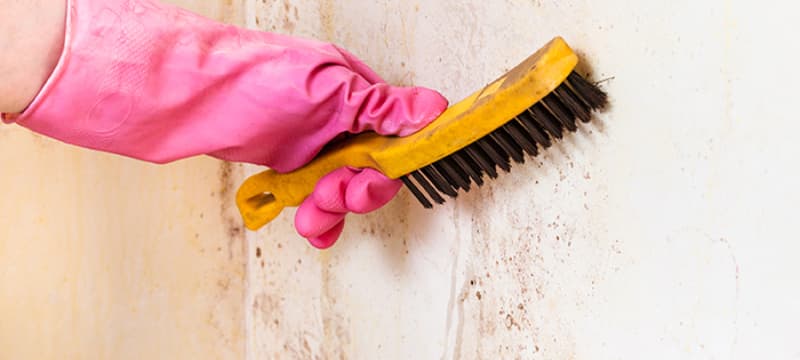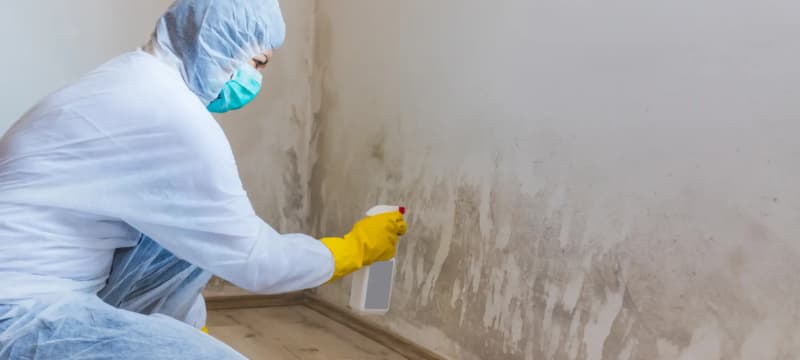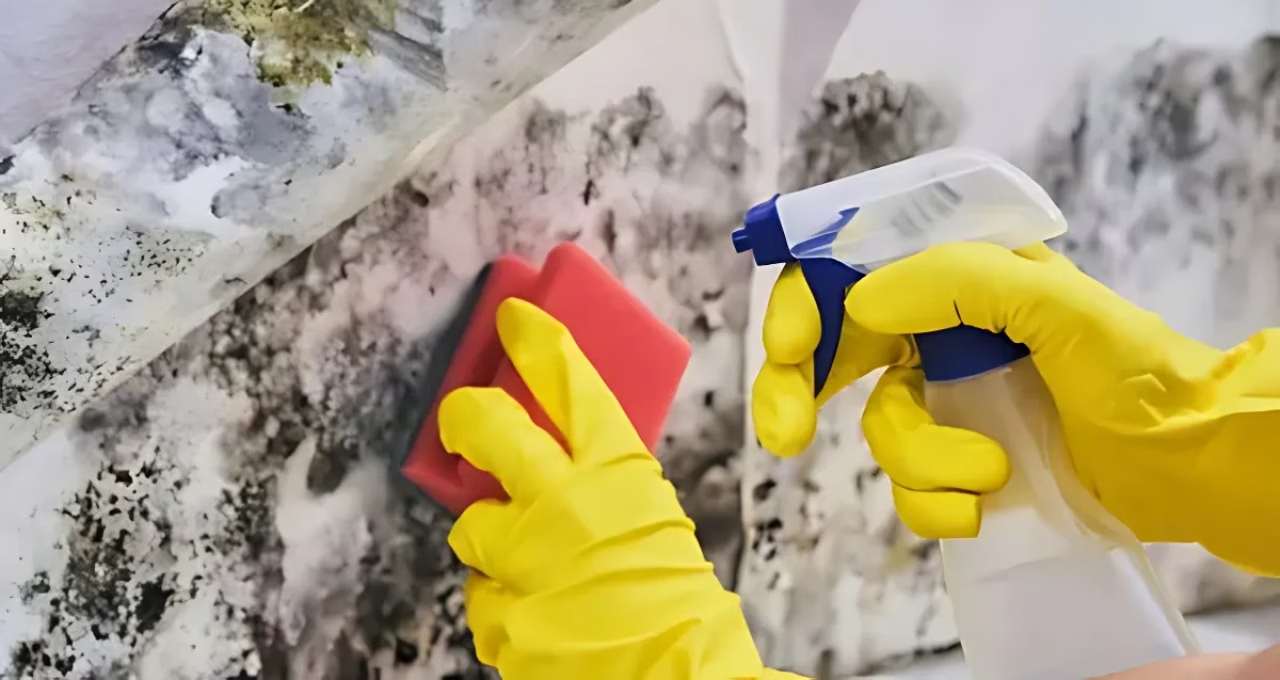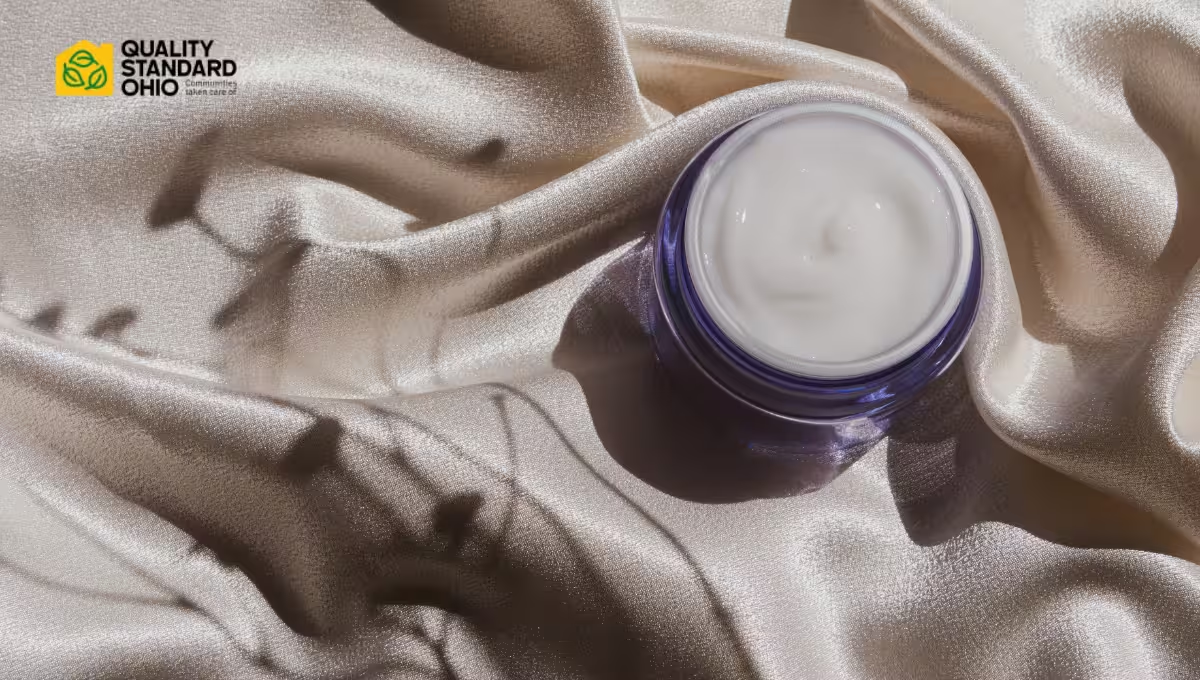You know that musty smell you noticed in your basement last week?
Yeah, that one you tried to ignore hoping it would go away on its own.
Here’s the thing: it won’t.
I’ve seen it hundreds of times in Columbus homes.
That innocent-looking water stain or that “harmless” musty odor?
They’re usually the tip of a much bigger problem.

And let me tell you something that might surprise you: that dehumidifier you bought? It’s like bringing a knife to a gunfight.
Trust me, I’ve spent the last 15 years dealing with mold in Columbus homes.
I’ve seen it all.
And I’m about to share something that most mold remediation companies won’t tell you.
Complete mold remediation process: What really happens behind the scenes
Look, I get it.
When you spot mold, your first instinct is to grab some bleach and start scrubbing.
Stop right there.
That happened to a friend of mine named Tom.
He lives in Upper Arlington and he ried that same approach last summer.
Spent an entire weekend scrubbing his basement walls with bleach. Thought he’d solved the problem.
Three weeks later?
The mold was back. Worse than before.
Why? Because what you see is rarely the whole story.
A fact about mold in Columbus homes
Here’s something most people don’t realize: Columbus’s climate is practically a five-star resort for mold.
Our humid summers? Perfect for mold growth.
Those freezing winters where we crank up the heat? Creates ideal conditions for condensation.
And don’t even get me started about our spring rains…
But here’s what you really need to know about mold in Columbus:
| Mold risk factors in Columbus | Why it matters |
|---|---|
| High humidity (60%+ in summer) | Creates perfect growth conditions |
| Seasonal temperature changes | Leads to condensation issues |
| Aging housing infrastructure | Hidden water damage risks |
| Frequent rain/snow | Moisture accumulation |
Why most DIY mold removal methods fail
Remember that bleach solution I mentioned earlier? Here’s why it doesn’t work:
Bleach only deals with surface mold. It’s like painting over a rusty car - it might look better for a while, but the problem keeps spreading underneath.
And here’s the kicker: bleach can actually make things worse.
When you use bleach on porous surfaces like wood or drywall, you’re adding moisture - exactly what mold needs to thrive.

The real dangers of ignoring mold
Let’s get serious for a moment.
Mold isn’t just an unsightly nuisance. Those black spots on your bathroom ceiling? They could be causing more harm than you realize.
Common health issues linked to mold exposure:
- Respiratory problems
- Chronic headaches
- Skin irritation
- Worsened asthma symptoms
- Unexplained allergic reactions
But here’s what really keeps me up at night: the hidden mold you can’t see.
Water damage & prevention solutions: Stop mold before it starts
Want to know the secret to beating mold in Columbus?
Stop it before it starts.
Understanding Columbus’s unique moisture challenges
Our city’s weather patterns create perfect conditions for water damage:
Spring storms bring heavy rains and potential flooding.
Summer humidity creates condensation issues.
Winter freeze-thaw cycles can cause pipe bursts.
The key? Understanding where moisture comes from in your specific situation.
The moisture triangle: What every homeowner should know
Here’s something they don’t teach you in homeowner school: moisture problems usually come from three main sources:
- External penetration
- Roof leaks
- Foundation cracks
- Window seal failures
- Internal generation
- Cooking
- Showering
- Indoor plants
- Human breathing (yes, really)
- Mechanical issues
- Leaking pipes
- HVAC problems
- Appliance failures
Prevention strategies that actually work
Look, I’ll be straight with you - preventing mold isn’t rocket science.
But it does require understanding your home’s specific risk factors.
And this is where most homeowners go wrong.
They focus on the symptoms instead of the cause. It’s like taking painkillers for a broken arm - sure, it helps temporarily, but you’re not fixing the real problem.
Here’s what really works:
First, understand that controlling indoor humidity is your best weapon.
Want to know a pro tip? Get a good hygrometer. Not those cheap ones from the dollar store.
Invest in something reliable that can actually tell you when you’re in the danger zone.
The early warning signs most people miss
You know what’s frustrating?
Seeing homeowners ignore the subtle signs until it’s too late.
That musty smell when you open your closet? That’s not normal.
Those dark spots in the corner of your ceiling? That’s not just age.
That persistent condensation on your windows? That’s a red flag.
When to call in the professionals for mold removal and remediation?
Let me be clear about something: There are times when DIY is fine.
But there are also times when you absolutely need professional help:
When you see black mold. Just stop right there. Don’t touch it. Don’t spray it. Don’t disturb it.
Why? Because disturbing toxic mold can release spores into the air - making a manageable problem much worse.
When the affected area is larger than 10 square feet. That’s not a random number - it’s based on EPA guidelines.
When you’ve had previous water damage that wasn’t properly addressed. Old water damage is like a ticking time bomb for mold growth.
The real cost of waiting too long
Here’s the thing about mold problems - they never get cheaper to fix.
What starts as a small spot on your bathroom ceiling can turn into a full remediation project if ignored.
And let’s talk about property value for a moment.
Did you know that documented mold problems can affect your home’s resale value?
Even after remediation, you’ll need to disclose previous mold issues to potential buyers.
How can you create a mold-resistant home environment?
Want to know the secret to keeping mold at bay in Columbus?
It’s all about creating an environment where mold can’t thrive.
Here’s your action plan:
-
Monitor humidity levels Keep indoor humidity below 60% during summer Aim for 30-50% during winter Use dehumidifiers in problem areas
-
Improve ventilation Install bathroom fans that vent outside Use kitchen exhaust fans while cooking Consider whole-house ventilation solutions
-
Address water issues immediately Fix leaks within 48 hours Clean gutters regularly Maintain proper drainage around your foundation
Common mistakes that invite mold growth
You know what I see all the time?
People making well-intentioned decisions that actually make their mold problems worse.
Like keeping their homes too warm in winter. Or not using bathroom fans because they’re “too noisy.”
These small habits can create big problems down the line.
Here’s what NOT to do:
- Don’t carpet your basement
- Don’t ignore small leaks
- Don’t close off rooms completely
- Don’t rely solely on air fresheners to combat musty smells
- Don’t store items directly against basement walls
The future of your home depends on today’s decisions
Here’s the bottom line: Mold problems in Columbus aren’t going away.
With our changing climate patterns, they’re likely to become more common.
But now you know what to look for. You understand the warning signs.
Most importantly, you know how to take action before small problems become big ones.
Remember: The best time to address mold issues is before they become visible.
The second best time? Right now.
Take control of your home’s moisture levels, address water issues promptly, and create an environment where mold can’t thrive.
Your home (and your health) will thank you for it.



